
Climbing Mt. Fuji in 2025 (July 1-Sep 10): What You Need To Know First (Access/Dates)
- Written by: LIVE JAPAN Editor
Climbing Mount Fuji is a once-in-a-lifetime adventure, and every summer, thousands take on the challenge. If you're planning to make the ascent between July 1 and September 10, preparation is key.
This guide covers essential tips on access, climbing dates, and what to expect so you’re ready for a safe and unforgettable journey to Japan’s highest peak.
Essential Gear
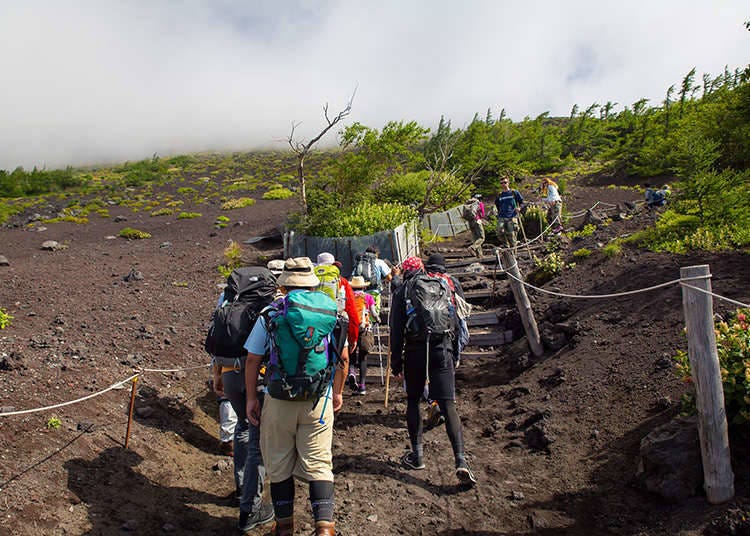
Prepare based on your level of hiking experience. Sturdy hiking boots, a backpack, rain gear, warm clothing, and gaiters to keep gravel out of your shoes are must-haves. For nighttime climbs, wear reflective clothing and bring a headlamp to help prevent accidents. Mountain huts offer limited food and drinks, so be sure to bring your own snacks and water before you begin your ascent.
In 2025, the Yoshida Trail opens from July 1, while the Subashiri, Gotemba, and Fujinomiya Trails open from July 10. All trails are scheduled to close on September 10.
Latest Mt. Fuji Climbing Updates
As of June 2025, a new permanent gate has been installed at the 5th Station on the Yoshida Trail. Designed to resemble a traditional torii gate to reflect Mt. Fuji’s cultural and spiritual significance, the checkpoint structure spans about 8 meters wide and stands 3.5 meters tall, made of steel for a striking presence.
At the gate, official staff members monitor climbers, checking for wristbands that prove the required climbing fee has been paid. During restricted hours, the central gate is closed, and only those staying at mountain huts or descending may use the side entrances.
2025 Climbing Restrictions: Rules That Apply to All 4 Trails
1. Mount Fuji has four official climbing routes. From 2 PM to 3 AM, access from the 5th Station is limited to those with reservations at mountain huts; others will not be allowed to start their climb during this time.
2. A climbing fee of 4,000 yen is required for all trails.
Route-Specific Regulations
Yoshida Trail (Yamanashi Prefecture):
If the daily limit of 4,000 climbers is reached, the gate will close. Advance payment is required when booking, and full cancellation fees apply starting two days after payment. You can change your climbing date up to the day before. At the time of purchase, you must agree to follow Mt. Fuji’s climbing rules, including bringing warm clothing, separate-style rain gear, and sturdy hiking shoes.
Fujinomiya, Gotemba, and Subashiri Trails (Shizuoka Prefecture):
Climbers must register through the official “Shizuoka FUJI NAVI” app. You'll need to complete a short e-learning session on safety and conservation to receive a digital climbing pass. At the trailhead, show your QR code in the app to the onsite staff.
Precautions
Weather Conditions
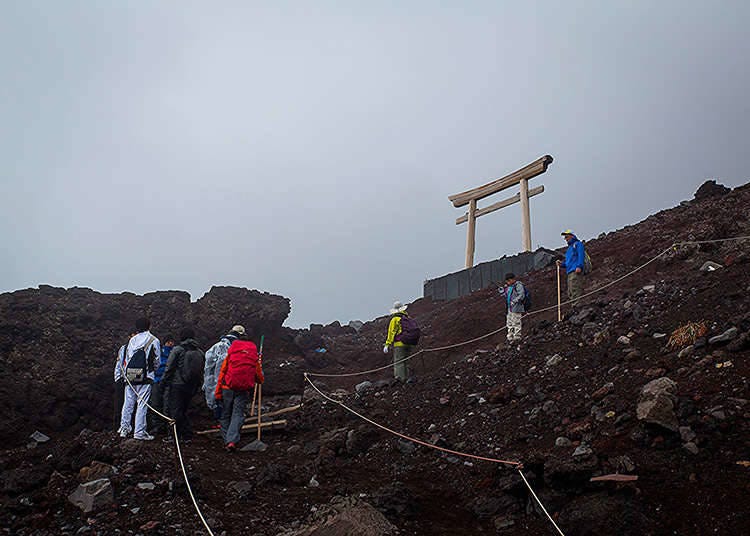
While the trails remain open throughout the summer climbing season, weather on Mt. Fuji can change suddenly and dramatically due to its isolated peak. Even in summer, temperatures can drop below freezing. Always check the forecast before your climb and bring appropriate gear for cold, wet, and windy conditions.
Watch for Altitude Sickness
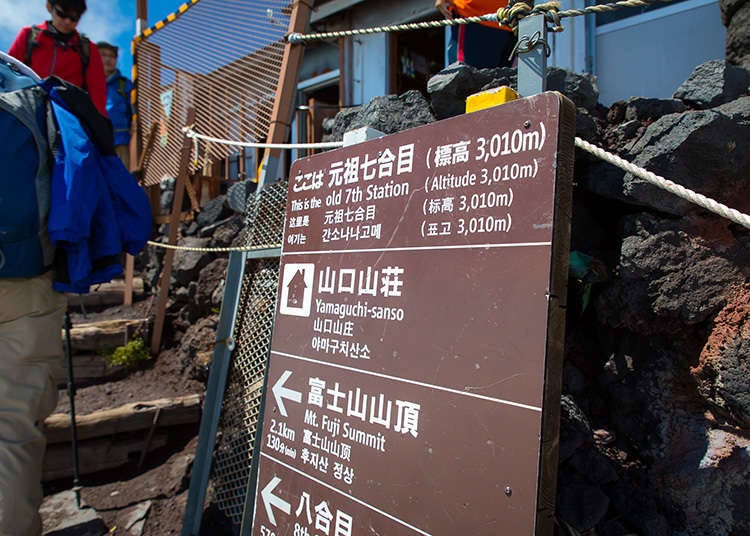
Anyone can experience altitude sickness while climbing Mt. Fuji, especially those attempting to summit too quickly. Symptoms include headache, nausea, fatigue, and chills, which can seriously affect your climb. To reduce the risk, take a 30-minute rest at the 5th Station to let your body adjust to the altitude before starting your ascent.
Staying at a Mountain Hut
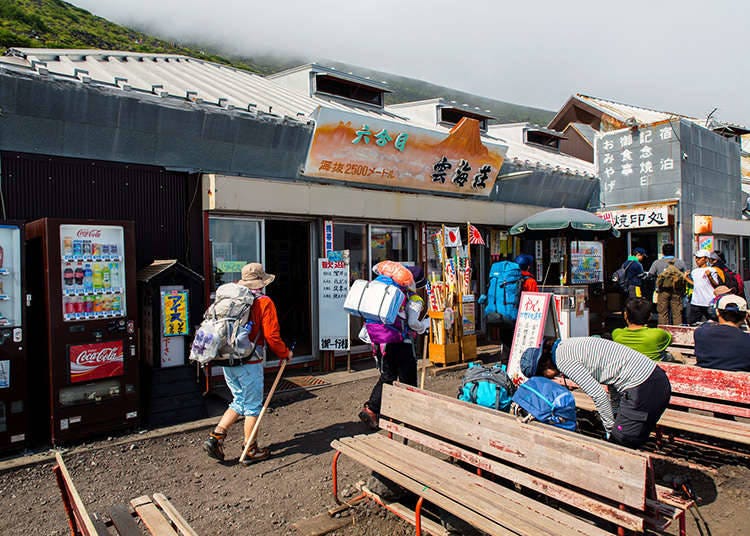
Mountain huts along the main trails offer simple lodging and basic meals, typically priced between 10,000 and 15,000 yen per person for one night with two meals. All payments are cash only, so bring enough yen with you. Walk-in availability is extremely limited, especially on popular routes and weekends, so advance reservations are essential.
Facilities are very minimal; these huts are designed more for resting than comfort. Expect tightly packed sleeping arrangements, often in shared rooms separated by gender. There are no showers or baths, and no water is provided for washing your face or hands, as water is scarce on Mt. Fuji. Some huts begin to close by the end of August, so be sure to confirm availability ahead of time.
Toilets may differ in how they process waste; check the instructions carefully before use. And remember, take all your trash with you. Mountain huts must haul garbage back down to the 5th Station at great cost, so minimizing waste is part of responsible climbing.
- Fuji Subaru Line 5th Station
- ・Mt. Fuji Miharashi (http://www.fujisan5.com; available in Japanese, English)
・Unjokaku (http://www.unjokaku.jp; available in Japanese, English, Traditional Chinese, Thai)
- 5th Station
- ・Sato-goya (https://www.fuji-satogoya.com/; available in Japanese)
- 6th Station
- ・Satomidaira / Seikanso (https://seikanso.jp/; available in Japanese, English)
- 7th Station
- ・7th Station Tomoe-kan (https://tomoekan.com/; available in Japanese, English)
・Kamaiwa-kan (https://kamaiwakan.jpn.org/; available in Japanese, English, Traditional Chinese, Simplified Chinese, Korean)
・Fuji Ichikan (https://www.fuji-ichikan.jp/; available in Japanese, English)
・Toriiso (http://toriiso.com/; available in Japanese)
・Toyokan (https://www.fuji-toyokan.jp/; available in Japanese, English)
- 8th Station
- ・Taishikan (https://www.mfi.or.jp/~taisikan/; available in Japanese, English)
・Horaikan (https://www.horaikan.jp/; available in Japanese)
・Ganso Muro (https://www.ganso-muro.jp/; available in Japanese, English)
・8th Station Tomoe-kan (https://tomoekan.com/; available in Japanese, English)
- 5th Station
- ・Sansou Kikuya (http://fujisan-kikuya.jp/; available in Japanese)
- Sunahara 5th Station
- ・Yoshinoya (http://fujisan-sunaharaigogou.com/; available in Japanese)
- Main 6th Station
- ・Setokan (https://fujisan-setokan.com/; available in Japanese, English)
- 8th Station
- ・Edoya (Lower Edoya) (https://fujisan-edoya.com/edoya2/; available in Japanese)
・Munatsuki Edoya (Upper Edoya) (https://fujisan-edoya.com/edoya1/; available in Japanese)
- 8.5th Station
- ・Goraikokan (https://www.goraikoukan.jp/; available in Japanese, English)
- New 6th Station
- ・Hanzobo (http://hanzobo.main.jp/; available in Japanese)
- 7.4th Station
- ・Warajikan (https://warazikan.main.jp/; available in Japanese)
- 6th Station
- ・Unkaiso (http://www.unkaiso.com/; available in Japanese)
・Hoei Sanso (http://houeisansou.com/; available in Japanese)
- New 7th Station
- ・Goraiko Sanso (http://www.goraikousansou.com/; available in Japanese, English)
- Original 7th Station
- ・Yamaguchi Sanso (https://fujisan-ganso.jp/; available in Japanese)
- ・Ikedakan (https://www.fuji8.com/; available in Japanese)
- ・Ikedakan (https://www.fuji8.com/; available in Japanese)
- 9.5th Station
- ・Munatsuki Sanso (https://munatsuki.com/; available in Japanese, English)
- Summit
- ・Summit Fujikan (https://fujisanchou.com/; available in Japanese, English, Traditional Chinese)
Toilets on Mt. Fuji
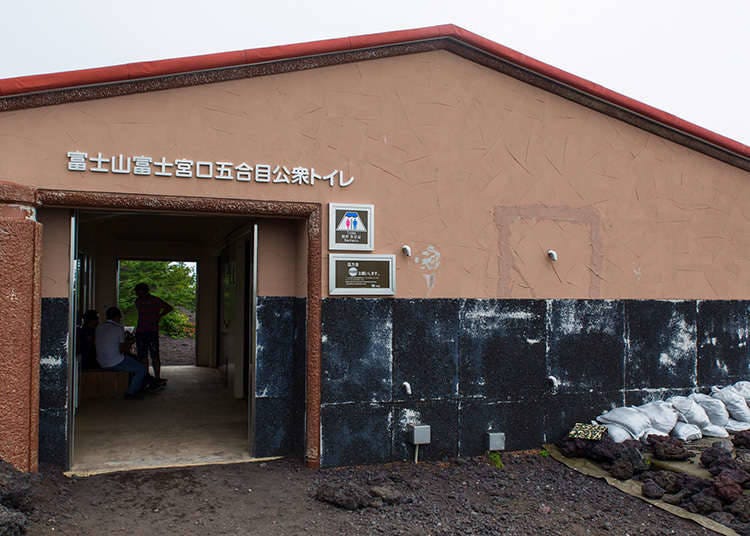
One essential item to pack for your climb is a stash of 100-yen coins. Most toilets on Mt. Fuji require a usage fee of 200 to 300 yen, and they typically operate on an honor system: just drop the coins into a collection box, as there are usually no attendants. If you're planning an off-season ascent, be sure to bring a portable toilet, as facilities may be closed.
Keep Mt. Fuji Clean
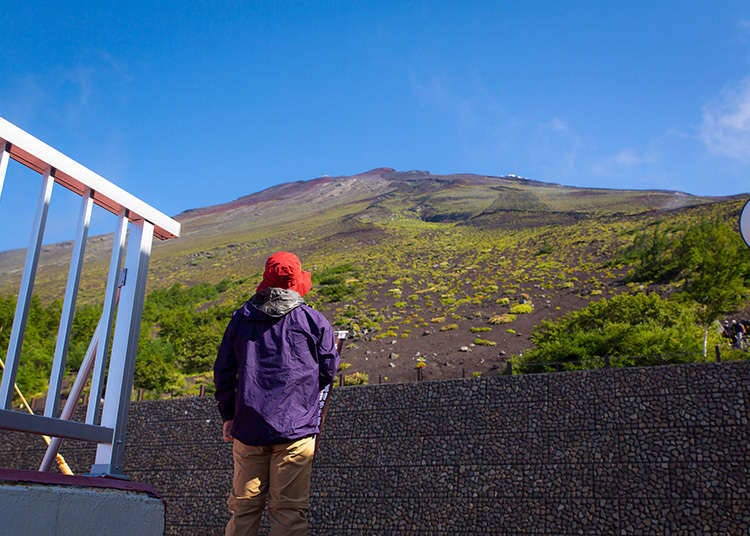
To help preserve the beauty of Mt. Fuji, all climbers must take their trash home with them. Be sure to bring a bag specifically for carrying your garbage in your backpack. Every climber’s effort counts in protecting this iconic landscape.
Climbing Etiquette on Mt. Fuji
1. Uphill has the right of way
Always give priority to those climbing uphill. Be courteous and yield the trail with a spirit of cooperation.
2. Avoid dangerous overtaking
During peak season, trails can get crowded. Forcing your way past others can cause you to step off-trail, risking falls or dislodging rocks. Whether ascending or descending, stay calm and move at a safe pace.
3. Stick to the mountainside (inner side) of the trail
Walking along the edge increases the risk of loose stones falling. Always stay on the inner side of the path. If you accidentally cause a rock to fall, immediately shout “Rock!” to alert others below.
4. Do not approach wildlife nests
Mt. Fuji includes designated wildlife protection zones. If you spot a nest, do not touch or approach it—this helps protect breeding birds and animals.
5. Be quiet near mountain huts
At night, many people are resting in or near the huts. If you’re taking a break nearby, keep your voice down and avoid making noise.
Before You Go

On the mountain, mutual respect and consideration go a long way. Uphill climbers always have the right of way, and quiet voices are essential around huts at night so others can rest. Lastly, Mt. Fuji is a national park—removing rocks or plants is strictly prohibited. Follow proper etiquette and make your climb a memorable and responsible one.
Access to Mt. Fuji
From Kawaguchiko Station or Mt. Fuji Station on the Fujikyu Line, take a Fujikyu bus to the 5th Station—about a 1-hour ride. To reach Kawaguchiko Station from Tokyo, take the JR Chuo Line to Otsuki Station, then transfer to the Fujikyu Line (about 40 minutes).
(This article was updated in June 2025 based on the latest available information. Please check the official website for current details.)
-

-
Address
Fujiyoshida-shi, Yamanashi, 403-0000
View Map -
Nearest Station
Gotemba Station (JR Gotemba Line)
-
Address
Fujiyoshida-shi, Yamanashi, 403-0000
The LIVE JAPAN editorial team is a multinational group made up of native editors who have lived in Japan for over five years and Japanese editors who love to travel. Together, we share the best of Japan, offering cultural insights, historical context, event updates, and travel-friendly deals, to support your journey every step of the way.
- Area
- Category
*Prices and options mentioned are subject to change.
*Unless stated otherwise, all prices include tax.
Popular Tours & Activitiess
Recommended places for you
-

New in Ginza! Air BicCamera Ginza Opens with a Faster, More Convenient Shopping Experience
by: Guest Contributor
-
Ad

[Tokyo, Ueno] A Journey to the Sacred Grounds of the Tokugawa Shoguns: A Complete Guide to the "EDO SHOGUN’S LEGACY TRAIL TOUR" – Where Special Access, Modern Art, and Digital Innovation Converge
by: Guest Contributor
-

Japan’s Shinkansen Is About to Change Travel in an Unexpected Way
by: Guest Contributor
-
Ad

Discover the "Miraculous Forest" in the Heart of Tokyo: The Institute for Nature Study (9 Minutes from JR Meguro Station)
-

Jujutsu Kaisen Takes Over JR East With a Wrapped Shinkansen This Winter
by: Guest Contributor
-

This Winter, Godzilla Takes Over Haneda Airport
by: Guest Contributor
Inspiration for Accommodations
-

Enjoy Mt. Fuji from the Comfort of Your Room! Recommended Ryokan with Mt. Fuji View
-

Stay Near the Cherry Blossoms! Hotels for Cherry Blossom Viewing in Tokyo
-

Family-Friendly Hotels with Free Shuttle to Disneyland: Convenient Access for a Magical Stay
-

Top Ranked Hakone Hotels with Mt. Fuji View: Enjoy Stunning Scenery from Your Private Space
-

Convenient Tokyo Hotels with Airport Shuttle: Ideal for Families and Heavy Luggage
-

Stunning Tokyo Tower View Hotels: Enjoy Spectacular Scenery from Your Private Space
-

Convenient Asakusa Hotels with Kitchens: Ideal for Extended Family Visits
-

Experience Luxury: Hakone's 10 Best Five-Star Accommodations
-

Enjoy Mt. Fuji Autumn Leaves! Top Hotels Near the Popular Autumn Leaves Corridor
-

Experience Hakone Fall Foliage from Your Room with Stunning Views
-

Bicycling Tour of Tokyo: 3 Sightseeing Cycle Guides for Seeing Tokyo this Spring!
by: David McElhinney
-

10 Tokyo Places You Can Enjoy for Free!
-

Exploring Tokyo: 4 Must-Visit Spots around Tokyo Station
-

Kayak to an uninhabited island in the Seto Inland Sea, near Kagawa
-

32 Must-Do Things in Tokyo: Top Attractions for First-Time & Repeat Visitors
-

Tokyo Station Top 10 Sweets Ranking!
- #best ramen tokyo
- #what to buy in ameyoko
- #what to bring to japan
- #new years in tokyo
- #best izakaya shinjuku
- #things to do tokyo
- #japanese nail trends
- #what to do in odaiba
- #onsen tattoo friendly tokyo
- #daiso
- #best sushi ginza
- #japanese convenience store snacks
- #best yakiniku shibuya
- #japanese fashion culture
- #best japanese soft drinks

























